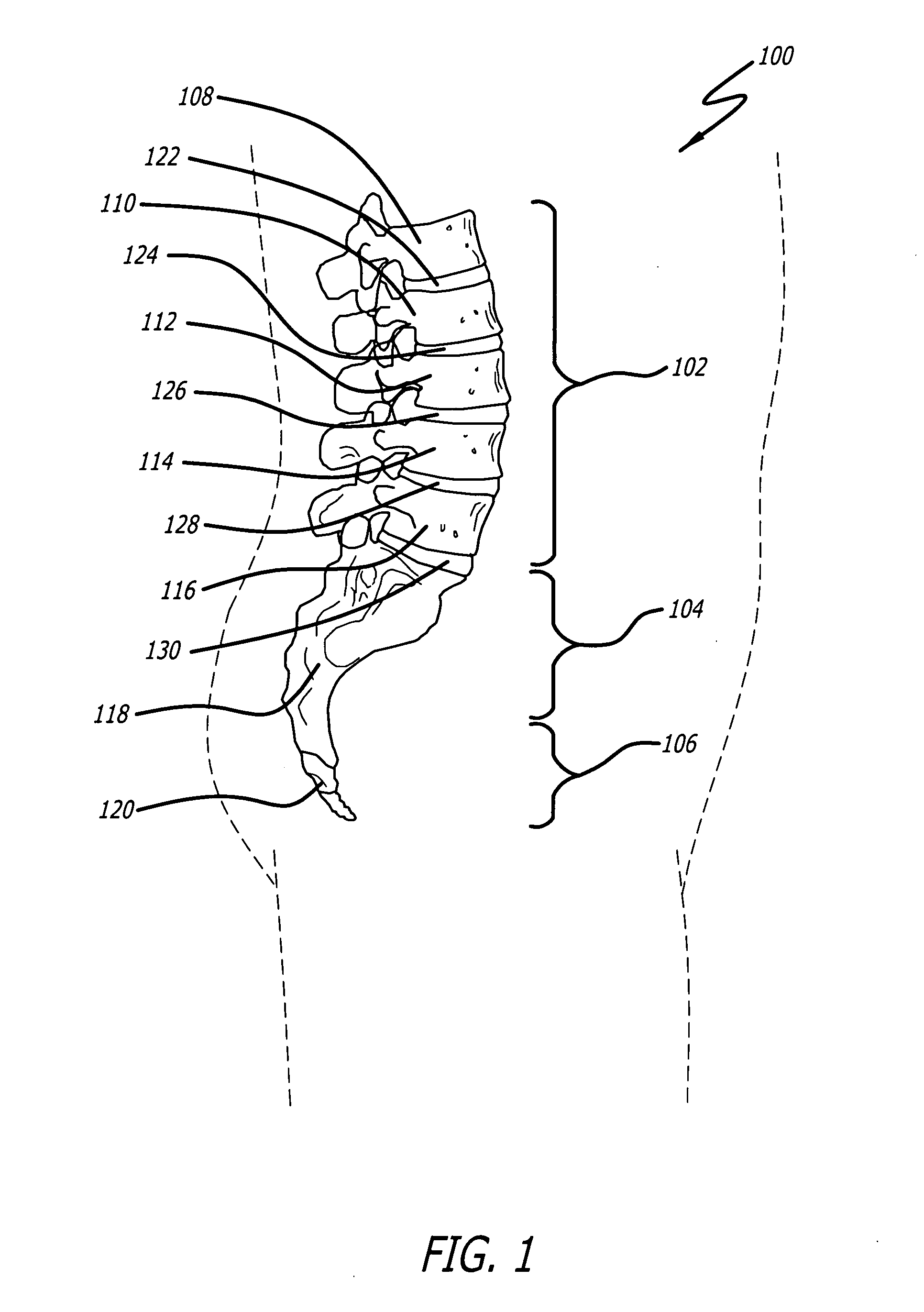Method of deformity correction in a spine using injectable materials
- Summary
- Abstract
- Description
- Claims
- Application Information
AI Technical Summary
Benefits of technology
Problems solved by technology
Method used
Image
Examples
Embodiment Construction
[0042]The following description is intended to convey a thorough understanding of the present invention by providing a number of specific embodiments and details involving use of a material for increasing the stiffness of an intervertebral disc. It is understood, however, that the present invention is not limited to these specific embodiments and details, which are exemplary only. It is further understood that one possessing ordinary-skill in the art, in light of known systems and methods, would appreciate the use of the invention for its intended purposes and benefits in any number of alternative embodiments, depending upon the specific design and other needs.
Description of Relevant Anatomy
[0043]As shown in FIG. 1, a portion of a vertebral column, designated 100, is shown. As depicted, vertebral column 100 includes a lumbar region 102, a sacral region 104, and a coccygeal region 106. As is known in the art, vertebral column 100 also includes a cervical region and a thoracic region....
PUM
 Login to View More
Login to View More Abstract
Description
Claims
Application Information
 Login to View More
Login to View More - R&D
- Intellectual Property
- Life Sciences
- Materials
- Tech Scout
- Unparalleled Data Quality
- Higher Quality Content
- 60% Fewer Hallucinations
Browse by: Latest US Patents, China's latest patents, Technical Efficacy Thesaurus, Application Domain, Technology Topic, Popular Technical Reports.
© 2025 PatSnap. All rights reserved.Legal|Privacy policy|Modern Slavery Act Transparency Statement|Sitemap|About US| Contact US: help@patsnap.com



